A Judge Reveals Shocking New Facts in the Case of the Runaway Princesses of Dubai
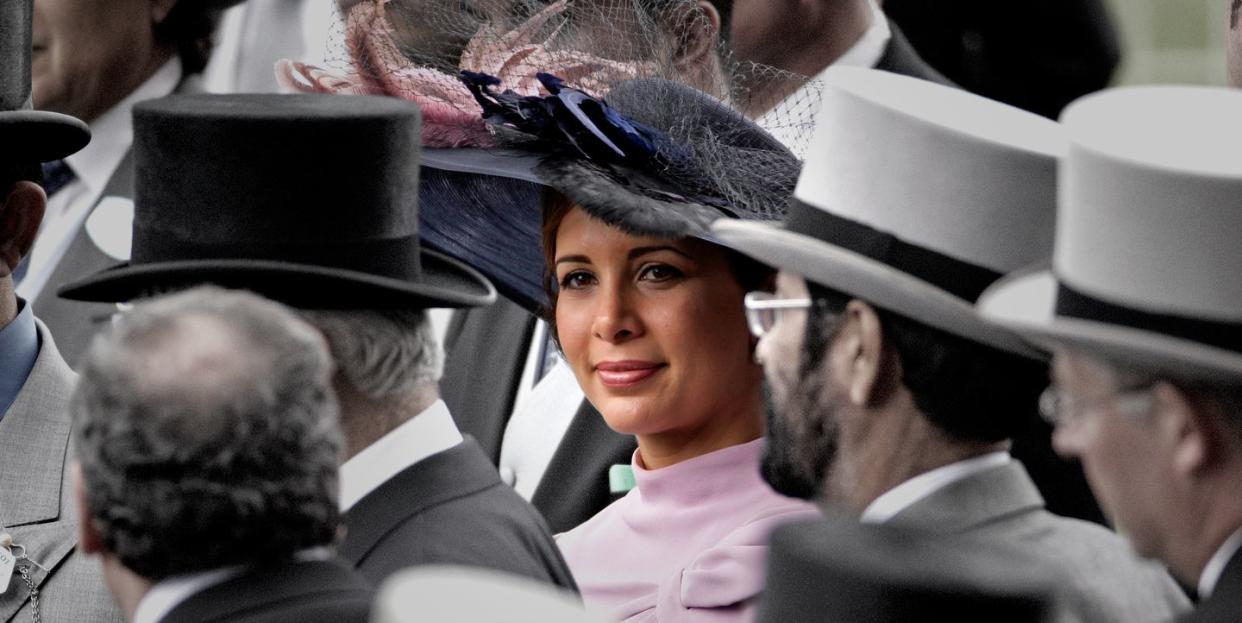
On Thursday, March 5, Sir Andrew McFarlane, president of the family division of the high court in England and Wales, released a thirty-four page judgment that blew the lid off the long-suppressed secrets of Dubai's ruler, Sheikh Mohammed bin Rashid al Maktoum. The judgment came in response to a child-custody petition filed last year by the multibillionaire’s estranged sixth and youngest wife, Princess Haya, and was made public after Great Britain’s Supreme Court rejected a last-ditch appeal by the Sheikh and his lawyers to keep it under wraps.
The findings are certain to further tarnish an image that has been battered by a series of damaging allegations. McFarlane found that Al Maktoum had kidnapped and drugged two of his daughters, Princess Shamsa and Latifa, after they tried to run away from the royal court—backing up an explosive account provided by Latifa in a video she recorded while on the run in February 2018.
It also provided shocking details of the events that led to Princess Haya’s fleeing Dubai last year and taking refuge in England. Among the revelations: Haya had conducted an affair with a male bodyguard in 2017 or 2018 that enraged her husband and prompted him to begin making threats against her. Relations deteriorated after Haya learned the truth in early 2019 about Shamsa and Latifa. On two occasions that March, Haya found a gun on her bed with its muzzle pointed toward the door and the safety lock off. She also received anonymous notes warning her that “your life is over.”
The sheikh had refused to attend any of the custody hearings, claiming that they interfered with his duties as head of state. “This has resulted in the release of a 'fact-finding' judgment,” he said in a statement issued after the report was made public, “which inevitably only tells one side of the story.”
Read on for my full investigation of the case, which was originally published here in December, 2019.
The Royal Courts of Justice, a massive Victorian Gothic structure on the Strand in the heart of London built in the 1870s, is not typically the scene of media frenzy. But on the gray, chilly morning of November 12, 2019, a cluster of photographers and reporters stood behind barricades, waiting for a glimpse of a reclusive celebrity. At 10:50 a.m. a black Range Rover pulled up to the entrance. Flanked by two bodyguards and wearing a conservative dark green dress, Princess Haya Bint Hussein, daughter of the late King Hussein of Jordan and estranged wife of Sheikh Mohammed Bin Rashid Al Maktoum, the ruler of Dubai, strode toward the entrance.
Right behind her came her barrister, Fiona Shackleton, who represented Prince Charles in his 1996 divorce from Princess Diana. The current divorce proceedings, between two of the world’s richest royals, were about to enter a particularly acrimonious phase: a weeklong hearing over custody of the couple’s children, an 11-year-old daughter and a seven-year-old son. Sheikh Mohammed had also armed himself with a top barrister, Helen Ward, who represented film director Guy Ritchie in his divorce from Madonna.
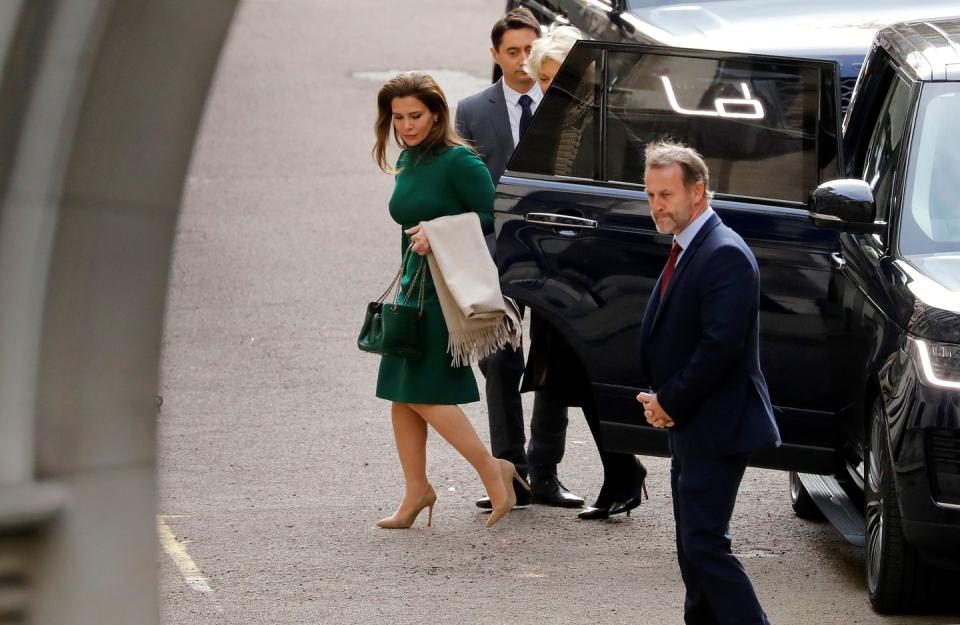
But, curiously, the sheikh—who had skipped preliminary hearings in July and October—had again decided not to appear. (According to the Daily Mail, Mohammed was in England at the time of the October hearing but chose to attend the Tattersalls auction in Newmarket, Suffolk, where he laid down $4.8 million for a young horse.) To observers, it was a startling decision by a man with so much to lose, and it was not likely to go over well with Judge Andrew McFarlane, who had imposed a gag order on the proceedings.
The scene was a far cry from that of April 10, 2004, when Haya, 29, married Sheik Mohammed, 25 years her senior. She was elegantly clad in a white-and-gold-embroidered dress and a sheer white veil, a simple emerald pendant around her neck; he wore a traditional Arab headdress known as a gutra and a long yellow shirt.
The ceremony took place in a reception room at the Al Baraka Palace in Amman, as members of Jordan’s ruling family, including Haya’s half-brother King Abdullah, his wife Queen Rania, and Princess Muna, the mother of the monarch and the former wife of the late King Hussein, looked on.

The wedding had the appearance of a strategic union, yet by all accounts it was a match born of genuine feeling. The princess and the sheikh had fallen in love, Haya would later say, while participating in the World Equestrian Games at Jerez de la Frontera in Spain two years earlier. “It was wonderful to understand someone without the need for words,” she told the Daily Mail in January 2009.
The -Oxford-educated Haya had shrugged off the fact that she had become the sixth and most “junior wife” of the sheikh, comparing the situation, somewhat misleadingly, to her father’s having married Queen Alia, her mother, when he was not yet divorced from his previous wife. “Falling in love can eclipse a lot of things,” she said. “I went in [to this marriage] with my eyes open, and certainly I’m very happy.”
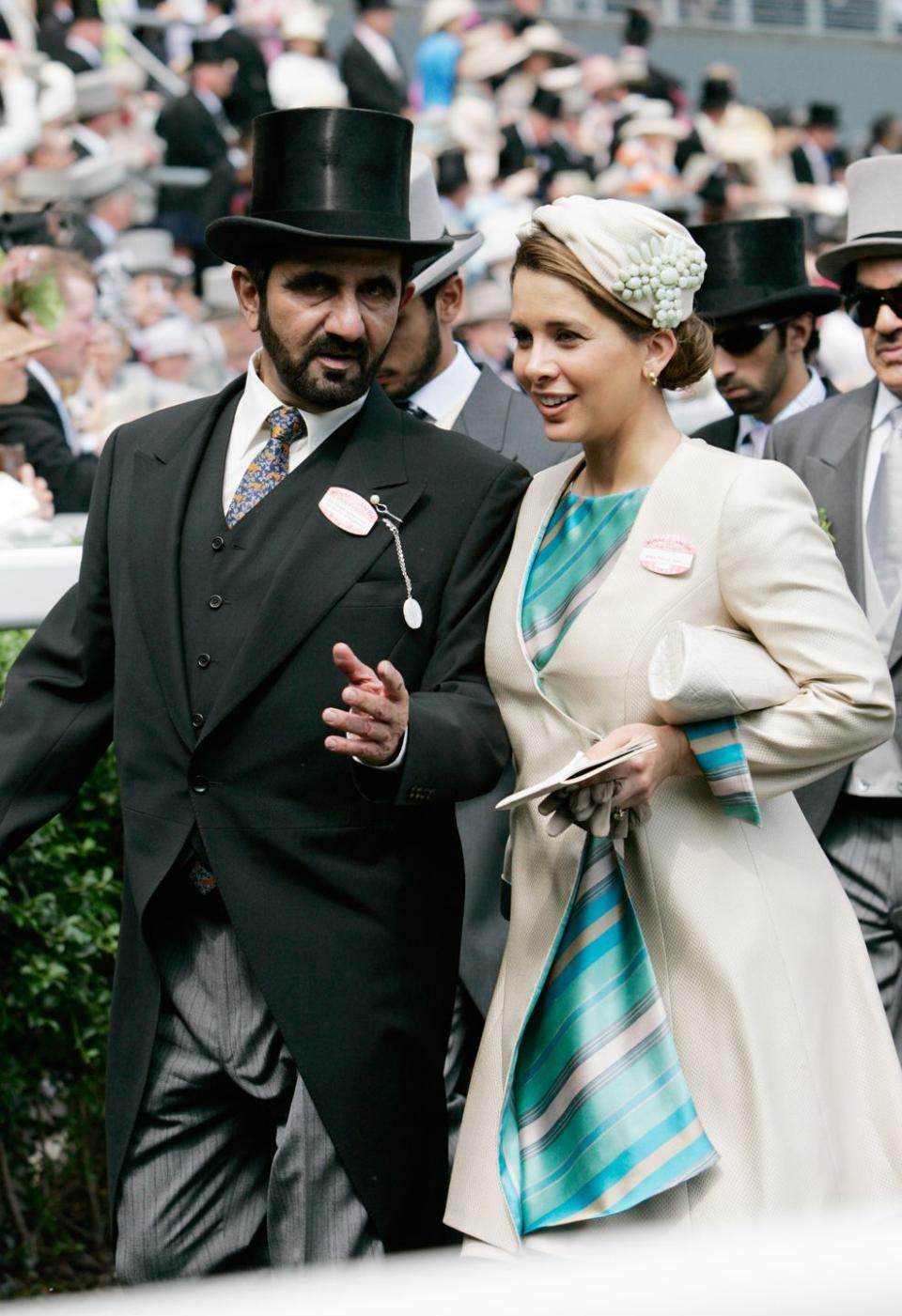
The happiness of the royal couple over the next decade is on display in photographs taken of them, often hand in hand and with their children, at a variety of glamorous events, from the Royal Ascot Races in England to the 75-mile Endurance Race at Wadi Rum, Jordan.
Haya lived with her children in her own lavish Dubai compound—all the royal wives have their own households—but among the sheikh’s consorts she alone reportedly had visitation rights to Zabeel Palace, his massive, walled-off mansion in the heart of Dubai, rather than having to wait on her husband to pay her a call, as is the custom.
It was a privilege she appears to have guarded jealously. “Princess Haya refused to share the [palace] residence with any of the other wives,” a British source close to several of Mohammed’s daughters tells me. She alone among his wives rode horses with him, attended public ceremonies beside him—always without a hijab—and traveled to international diplomatic events, meeting fellow royals around the world. “Every single day I thank god that I am lucky enough to be close to him,” Haya gushed to Emirates Woman magazine in 2016.
That was then. On June 23, 2019, a website called Emirates Leaks reported that Haya, 45, with the help of a German diplomat, had fled with her children to Germany and requested asylum. The website further claimed that Dubai had demanded that the German government return the princess and her children immediately, but that Germany had refused. (The German government has neither confirmed nor denied the report.)
By the end of July, Haya and the kids had turned up in London. There she quickly hired Shackleton, filed for divorce, and petitioned the British High Court to grant her both a forced marriage protection order (which allows her to keep her daughter from having to return to Dubai, where arranged unions are common) and, even more humiliating for the sheikh, a non-molestation order aimed at preventing “harassment” by her estranged spouse.

Meanwhile, the British tabloids have begun speculating about the cause of the couple’s split—from rumors about the princess’s closeness to a particular bodyguard to charges of intolerable conditions imposed by the prince at his palaces.
The sheikh, a poet in classical Arabic, lashed out at her “treachery and betrayal” in a verse published in June on his official Instagram account. “You no longer have a place with me,” he declared. “I don’t care if you live or die.” Holed up in her $107 million townhouse in Kensington, Haya has emerged only for periodic court dates.
Haya’s departure is not the only family scandal to shake up Sheikh Mohammed and the royal court. One of his daughters, Sheikha Latifa bint Mohammed Al Maktoum, tried to flee—twice. In 2002, when she was just 16, she attempted to cross the border into Oman during a riding expedition, and in February 2018 there was an escapade worthy of Hollywood that involved crossing into Oman in a car, then continuing via an inflatable dinghy, jet skis, and a yacht named Nostromo.

Both times she was captured and returned to her father. Before Latifa’s escape attempts, her older sister Sheikha Shamsa bint Mohammed Al Maktoum fled the family’s equestrian estate in England in 2000, when she was 19, and remained at large for several weeks before being seized on a street in Cambridge and flown back to Dubai.
Since her latest forced return, Princess Latifa has been seen in public only once, in December 2018. Her Instagram account, on which she used to document the -adrenaline-fueled activities typical of an Emirati royal—skydiving, horseback riding, martial arts—was erased “against her will” during her escape, according to the London-based advocacy group Detained in Dubai. The group claims it managed to copy one of her final posts, in which she states that she has been “trapped for 18 years and unable to leave” and that her life “is currently in danger.” Princess Shamsa, by all accounts, has not been seen in public for 19 years (she is now 37).
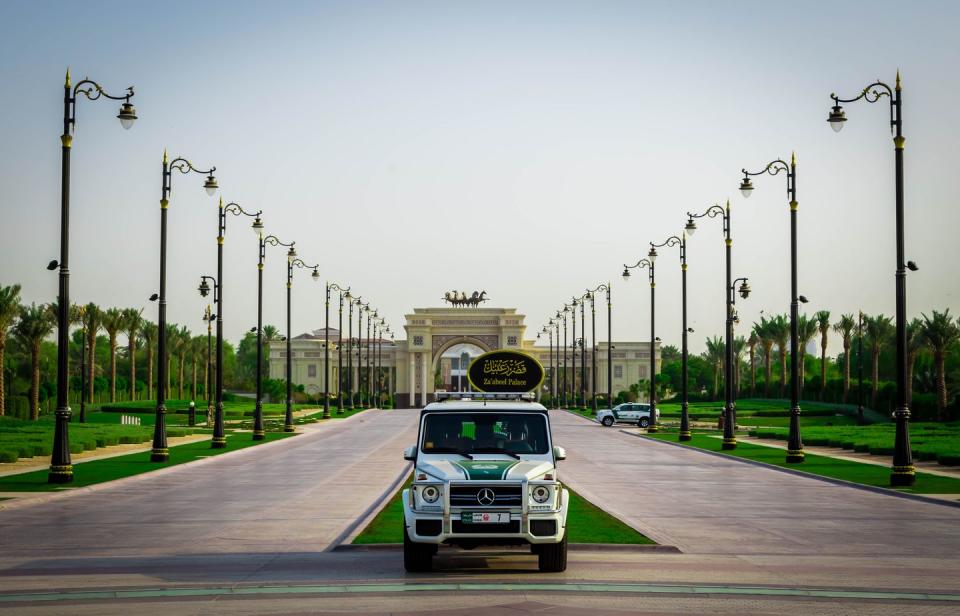
It’s impossible for an outsider to know fully what goes on in any household, especially one as opaque as the Zabeel Palace, which is surrounded by a high wall both literally and metaphorically. (The government of Dubai's media office would not comment on any aspect of this story, replying to queries with, "Nobody knows about this issue.")
And it may be tempting to dismiss the angst that fueled these royal flights as part and parcel of lives of almost unimaginable privilege. The home occupied by Shamsa and Latifa, their older sister Maitha (born in 1980), and their -Algerian-born mother, one of the sheikh’s wives, was a 40-room seaside villa near Zabeel Palace that had a staff of 100.

But a seemingly gilded existence can come at a high price. Think of Princess Diana trapped in a loveless marriage to an adulterous spouse, struggling with bulimia and depression, or Crown Princess (now Empress) Masako of Japan, who failed to produce a male heir, suffered what her doctors called an “adjustment disorder,” and dropped out of sight for a decade.
The scandal surrounding Sheikh Mohammed and his family has reverberated across the Middle East—and beyond. At stake is the reputation of one of the region’s most dynamic, seemingly progressive leaders, as well as the safety of his wife and children. The drama has cast a harsh light on the place of women throughout the Arab world, which, despite the liberalization of male “guardianship” laws and much-hyped breakthroughs such as the legalization of driving for women in Saudi Arabia, remains mired in inequalities.
It has also exposed the abuses that often go along with unrestrained male power and, one could argue, helped energize a mini–#MeToo movement, with growing numbers of unhappy Arab women of all ages following Haya’s and Latifa’s example and rebelling against the strictures imposed by the men in their lives.
“THE ULTIMATE TABOO”
When I flew to Dubai last fall, few Emiratis or expats would talk to me about the Haya scandal (or about Latifa or Shamsa), and the expats who did agree to speak did so on condition of anonymity. Part of that reluctance reflects a regional trend: Since the Arab Spring of 2011, openly questioning a ruler’s actions, or discussing sensitive issues such as women’s rights, is broadly discouraged.
“The general tone is, ‘Don’t question our cultural heritage,’” one European who has lived in Dubai for decades tells me in a conspiratorial tone as we sit in a grilled chicken restaurant in a luxury mall near the Burj Al Arab, the 1,053-foot-tall, sail-shaped, endlessly photographed hotel whose 1999 opening proclaimed the city-state’s grand ambitions.

But there is another, more personal reason people are refraining from being critical, he says: “The sheikh, at 70, is fighting for his legacy. He is preparing for his succession, and his place in history.”
The city’s boulevards, hammered by the blazing Gulf sun, are lined when I visit with ubiquitous posters showing “Sheik Mo” in various guises: waving warmly to his people; posing beside one of his Arabian horses at Godolphin, his racing stable; standing with his 37-year-old son, Crown Prince Hamdan. Any revelations of family disharmony, or of rebellion from his women, my source tells me, threatens his carefully cultivated image. “Talking about [his impending divorce from Haya] is the ultimate taboo.”
The government has taken steps to enforce that silence. A cybercrime law imposes a prison sentence and fines of 25,000 to 50,000 dirhams ($6,800 to $13,615)—and for foreigners, possible deportation—for false or defamatory statements. Journalists and others interpret this as a lockdown on all commentary about Princess Haya.
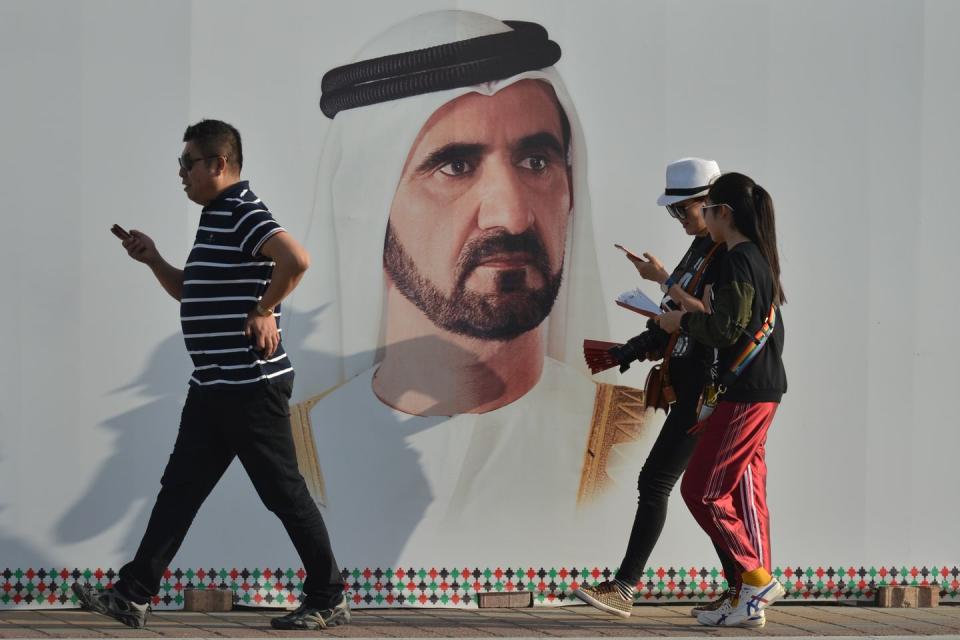
“You can get in trouble just for retweeting,” one expat retired journalist tells me. His former newspaper isn’t willing to touch the subject. “Everybody is practicing self-censorship,” says the journalist, who, like most other foreigners living in Dubai, has not been granted full-time resident status and so lives visa to visa.
Even the few critics whom the regime tolerates have been treading carefully. Abdulkhaleq Abdulla, a political scientist who has taught at Georgetown and criticized Saudi Arabia for imprisoning female activists, is circumspect. “If there is one daughter, two daughters, it is not representative of the other 20,” he tells me over a cappuccino at an opulent hotel near the Dubai airport. “And one wife who is running away is not representative of the other five that [Sheikh Mohammed] has.”
Abdulla points out that the lives of princesses are difficult everywhere and that it would be wrong to draw any conclusions about the culture of the Persian Gulf from the foiled escapes of Latifa and Shamsa and the thus far successful one of Haya. “The United Arab Emirates is probably the most tolerant, woman-friendly environment you can imagine in your life,” he declares. “I treat [the escapes] as an aberration.”
DAUGHTERS SCORNED?
Mohammed bin Rashid al Maktoum was born in Dubai in 1949, when it was one of seven backward sheikhdoms along the Persian Gulf side of the Arabian peninsula ruled by Great Britain. In 1968 the British announced their plans to pull out, and three years later his father, Sheikh Rashid bin Saeed al Maktoum, joined with the rulers of Abu Dhabi and five other sheikhdoms to create the United Arab Emirates.

His teenage son Mohammed was sent to study at Mons Officer Cadet Training school in Aldershot, later part of Sandhurst, and then trained as a pilot in Italy. At 22 he returned to Dubai to become minister of defense in the newly created UAE.
Over the next four decades, the Al Maktoums—and especially the dynamic Mohammed, who has been the de facto and then the actual ruler of Dubai since his father’s death in 1990—grew Dubai into a business and tourism mecca, financing flamboyant construction projects and creating a shiny Gulf-side megalopolis of office, condominium, and hotel towers bursting with shops, bars, and restaurants, plus artificial islands in the Persian Gulf, racetracks, a ski slope, and much more.
Over the years Sheikh Mohammed’s personal wealth, currently estimated at $4.5 billion, bought him all the classic accoutrements of an Arabian Big Man, including a 530-foot yacht that sleeps 48 guests and 88 staff members; Darley Stud, a global horse breeding operation in Suffolk, England (Emiratis love their beautiful, swift horses as much as they love their falcons); a vast hunting estate in Scotland; and the private residential compounds scattered about Dubai and staffed with multitudes within which live members of his large family, including an estimated 25 children.
As far as his children were concerned, a source close to several members of the royal family tells me, Mohammed tried to abide by Islamic principles and divided his time equitably among them. Still, he had favorites; he was particularly close to the crown prince, Hamdan, for example, who is, like his father, an enthusiastic horseman and falconer.
His relationships with several other offspring were more distant—including Latifa, his third child with his wife Huriah Ahmed Al Ma’ash. One expatriate businessman who is close to several Emirati royal families tells me that Huria was “the low wife on the totem poll” and suggests that this “probably carried over to [Sheikh Mohammed’s] lack of affection for their daughters.”
Whatever the case may be, Latifa has said that she was taken away from her mother when she was 10 months old and raised by her childless “auntie,” Sheikh Mohammed’s sister. It was only a decade later that Latifa was told the truth about her parentage and reunited with her mother. The episode, says one person close to the family, caused a breakdown in trust between her and her father. “She was upset that she had been lied to in her childhood.”
The estrangement went both ways. By Latifa’s account, she saw her father only once every two or three years. “It was always during a [public] family event,” says Hervé Jaubert, the former French navy officer and marine engineer who captained the yacht on which Latifa escaped in 2018, and who had become a confidant during the escape’s lengthy planning process. To Jaubert, Latifa described her interactions with her father as perfunctory at best: “[The Sheikh] would meet many people in the hall and would greet them one after another, stopping and saying, ‘Hi, how are you? Everything good?’ ”
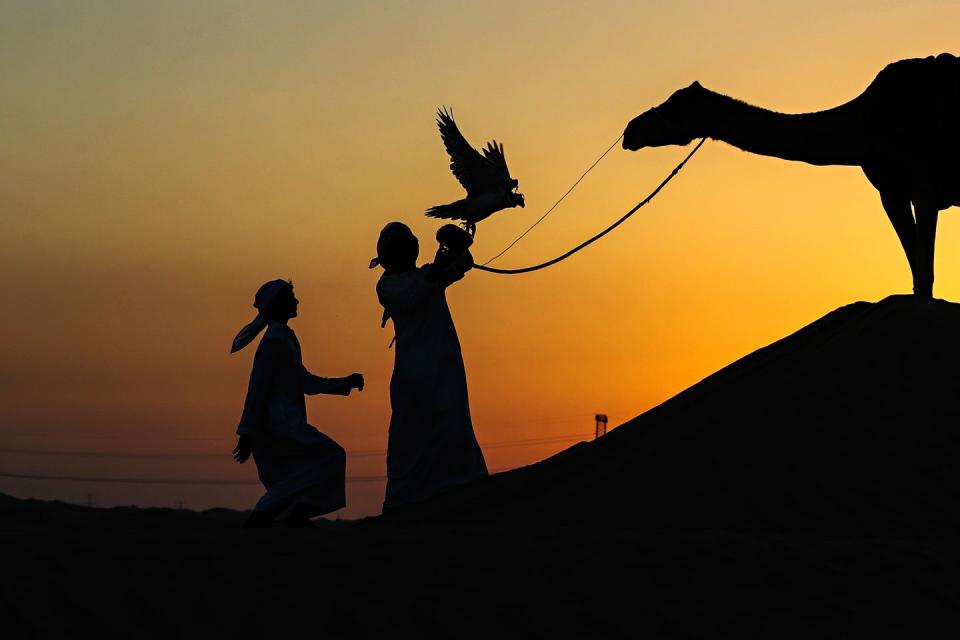
It was Shamsa, two years older than Latifa, who created the first cracks in the fa?ade. It’s still unclear what precipitated her unprecedented act of rebellion. All that is known is that in July 2000, Shamsa crept past a napping guard at Sheikh Mohammed’s $90 million Surrey estate, where various wives and children often spent holidays, and drove through an open gate in her black Range Rover. Sheikh Mohammed’s men eventually tracked her down on a sidewalk in Cambridge by tracing her cell phone signal and flew her out of England by private plane that August.
After Shamsa’s capture, Latifa seems to have been further stigmatized, and she witnessed things that affected her profoundly. “Latifa told me that [Shamsa] spent years in prison on the grounds of Zabeel Palace after her recapture,” says Radha Stirling, of Detained in Dubai, “and that she was drugged to the point where she was walking around like a zombie.” (Originally, to help a friend, Stirling founded Detained in Dubai in January 2008 to lobby governments on behalf of expatriates who run afoul of Dubai’s draconian criminal laws. Other NGOs, such as Amnesty International and Human Rights Watch, also handle such cases.)
Latifa began to plot her own exit, and one day in 2002 she slipped away from guards during a horseback riding excursion and, dressed like a Western tourist in jeans and a T-shirt, rode toward the Omani border, led there by an expat she had befriended. “But she was very naive,” Jaubert says. “She thought the border was open desert, with no barriers.” Villagers spotted her as she attempted to climb over a barbed wire fence and called the police.
THE NOT-SO-BENEVOLENT DESPOT
It was in this charged environment that Princess Haya arrived in 2004. She had grown up in one of the Arab world’s more liberal countries, Jordan, raised by her stepmother Queen Noor (formerly Lisa Halaby) following the death of her mother in a helicoptor crash in February 1977. The tragedy brought her closer to her father, who pampered her and encouraged her independent streak and her love for riding.
She attended secondary school at Badminton and Bryanston in England, and studied politics, philosophy, and economics at Oxford, where some were surprised by how easily she took to the freedoms of university life, “constantly in jeans, living in a dormitory,” as one Amman socialite recalls.
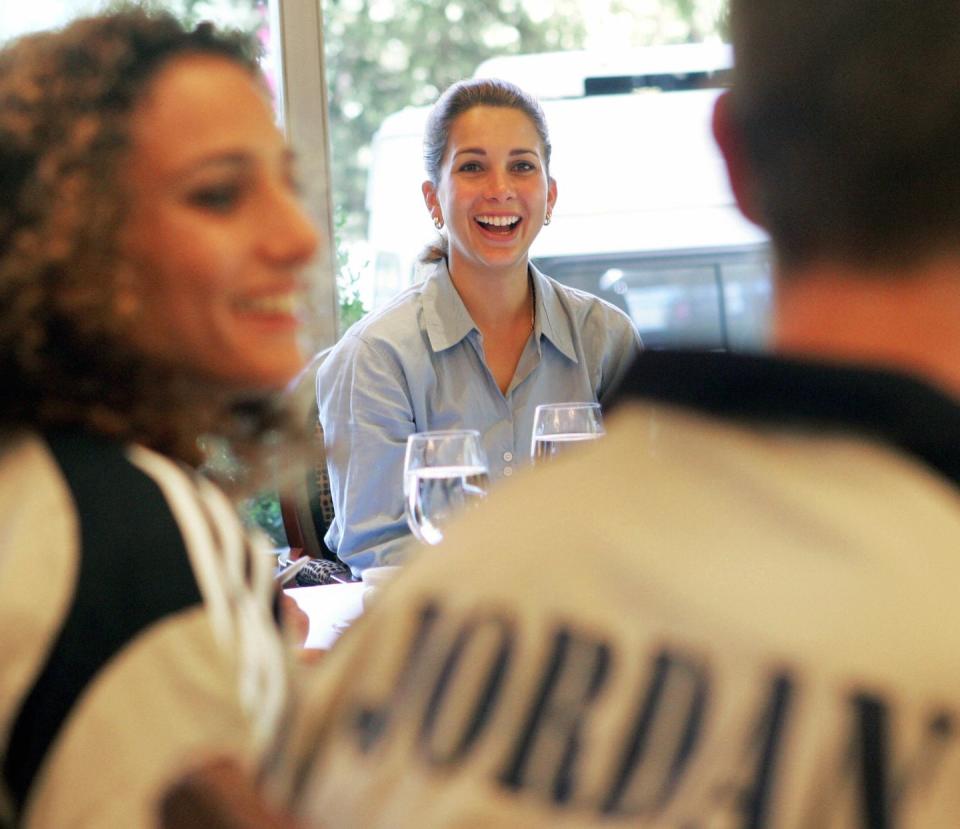
Still, she apparently always had a fascination for Arab men in positions of power. At one point, the socialite tells me, she became close to Bassel Al Assad, another accomplished horseman who was heir apparent to the Syrian strongman Hafez Al Assad. (Bassel was killed in a car crash in 1994, and his brother Bashar was anointed the dictator’s successor.)
After her graduation Haya decided to become a professional show jumper, and she spent 10 years training in Ireland and Germany, competing in the 2000 Sydney Olympics for Jordan and regularly driving her horses across Europe in a custom tractor-trailer.
Marriage was not a priority; she would wait, she told the Daily Mail, “to meet a man who doesn’t feel he has to mold me.” There was another important requirement, the Jordanian socialite tells me: “She had lost her father [in 1999], and she was looking for a strong father figure…who would give her security.”
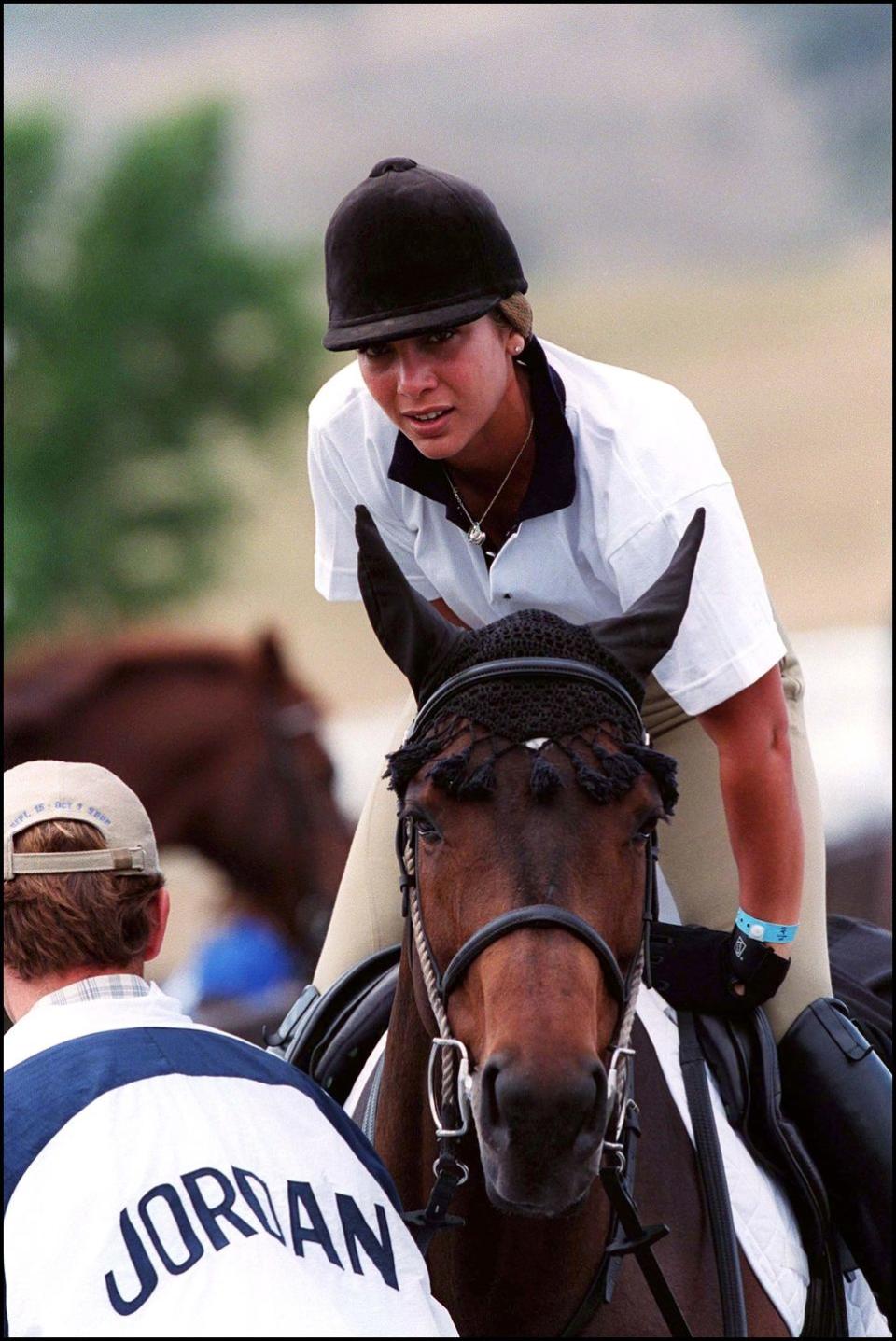
In Sheikh Mohammed, Haya apparently thought she had found such a partner. Dubai’s ruler has cast himself in the role of the ultimate enlightened despot, presiding over a progressive system in which women enjoy a prominent place. “Dubai’s posters, media, all of its [public relations] ensure that women appear as part of the [political and social] scene,” says Rothna Begum, a women’s rights researcher for Human Rights Watch in Africa and the Middle East. “Women are depicted as being alongside men in the workplace and in social institutions. They look like they are leading the country.”
In fact, the seven Emirates—led by Dubai and Abu Dhabi, the two largest—have some of the harshest male guardianship rules in the world. Their “personal status” or “family” law, governing marriage, divorce, child custody, and inheritance, is derived—as it is in Saudi Arabia—from sharia and is designed to keep women in the home, under the control of men.
A liberal family with open attitudes might allow a daughter in the household to marry or divorce outside the strictures of sharia. But women stuck in conservative households—with no ability to maintain a bank account, travel without permission, marry or divorce freely, or sleep with a man of their choosing—often chafe at the limitations of their lives.
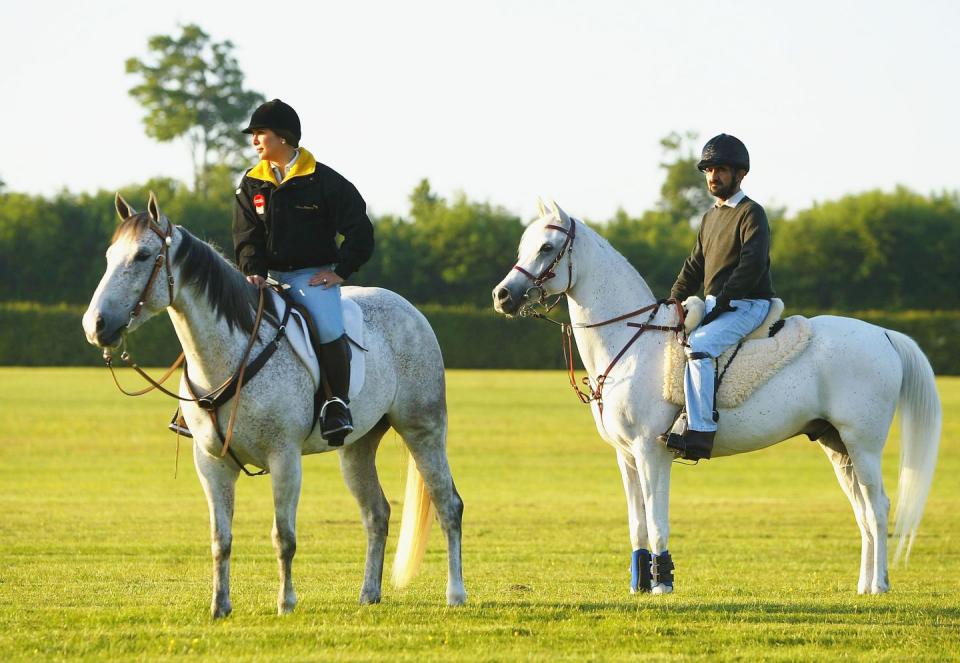
Sheikh Mohammed’s wives and daughters were bound by the same restrictions, though they received extravagant material benefits—trips abroad, the means to participate in expensive sports like skydiving, endless shopping—in exchange for surrendering control over their lives. “They operate within the accepted framework: helicopters, private jets, luxurious surroundings. Most are keen riders and spend extensive time at stables and riding,” Stirling says.
Tiina Jauhiainen, a Fin-nish martial arts instructor whom Latifa hired in 2010 to teach her the Brazilian martial arts technique capoeira and whom she would later enlist in the 2018 escape attempt, elaborated on her case: “Because [Latifa] is not allowed to work or study, when she starts a new hobby it becomes her purpose for getting up in the morning." Sky diving, especially, "gave her a great sense of freedom. By the end, she'd done around 2,500 jumps."
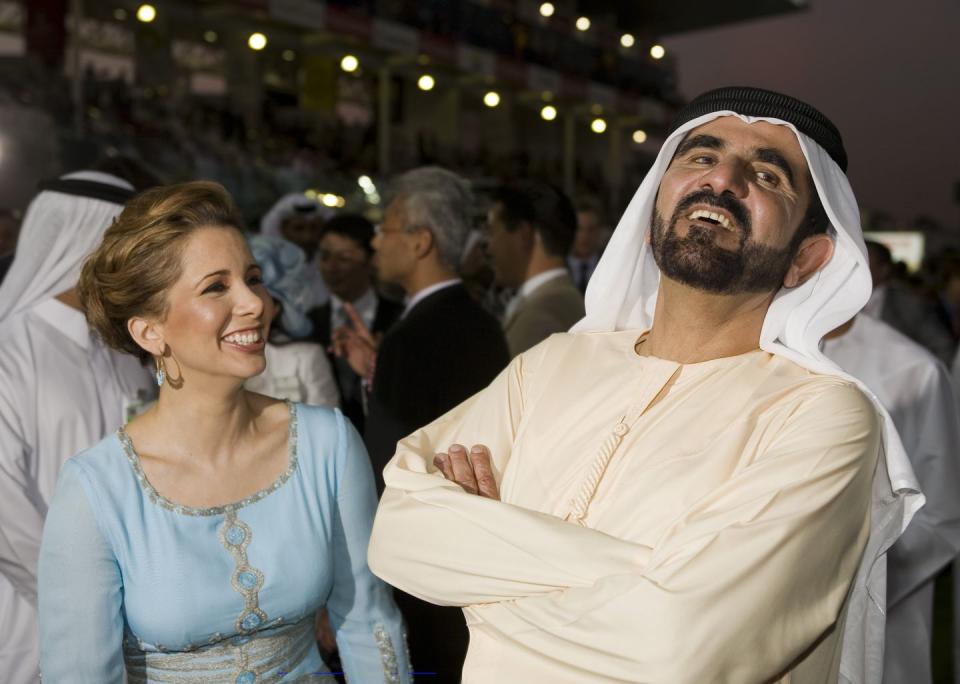
Princess Haya rejected all such controls. From the start she made it clear that she expected equality with her husband, and Sheikh Mohammed, perhaps sensing that he had married up, accommodated her. “The sheikh was essentially buying into prestige and legitimacy,” the expatriate businessman in Dubai tells me. “He came from a line of tribal sheikhs subsisting on handouts from the British, and suddenly he’s [marrying into] a family that claims to be descended from the Prophet.”
“He gave her a lot of liberty,” the Amman socialite concurs. “But what Haya was doing was not what the men in the Gulf wanted her to do. She would appear with him at state visits. She would never cover up. You would hear the conservatives in the UAE saying that they didn’t like this.”
Among those who resented the princess, sources claim, were Crown Prince Hamdan and his older brother Sheikh Rashid bin Mohammed (who died of a heart attack at age 33 in 2015). “Hamdan hates her,” the Jordanian socialite says. The expatriate businessman in Dubai agrees: “There were clear tensions in the family.”
Sheikha Latifa, meanwhile, reappeared in public three years after her first escape attempt—one year after her father’s marriage to Haya. But her new freedom was closely monitored. By Latifa’s account her father forbade her to travel beyond Dubai, ordered her to be accompanied by a male security team, imposed a curfew, and required that all of her contacts be vetted by Dubai’s intelligence services.
“THE SHEIKH’S DARKER SIDE”
Help for Latifa came unexpectedly, in the form of a book. Back in 2004 Jaubert had formed a company with powerful local partners in Dubai to construct recreational submarines. Four years later he was accused of embezzlement (he insists the charges were false) and, with his passport seized and facing arrest, fled in a rubber dinghy to a waiting sailboat, which took him to Mumbai, India.
In 2010, Jaubert published a book about his experience, Escape from Dubai, that included his email address. Later that year Latifa reached out to him and said that she wanted to escape as well. “You have to make sure you want to do this, because it’s highly dangerous,” he told her. “She said, ‘I’m sure. I cannot enjoy my life.’”
Jaubert instructed Latifa to visit a particular lingerie boutique in a mall (her security detail would have to wait by the entrance) and then slip out the back for a risky 15-minute rendezvous with one of his female agents to receive documents she would need to facilitate her movements once she reached India. Latifa also began putting aside part of her allowance each month—a total of $400,000, by her own account—to pay Jaubert for his help.
Jaubert advised her to look for an expat in Dubai whom she could enlist in the scheme. She turned to Jauhiainen, who, according to Stirling of Detained in Dubai, received a monthly salary of $15,000 from Latifa, along with a Rolex watch and a Spanish villa for her services. (While Jaubert and Jauhianen were paid for their help, Stirling insists that any profit motive does not detract from the credibility of Latifa’s story.)
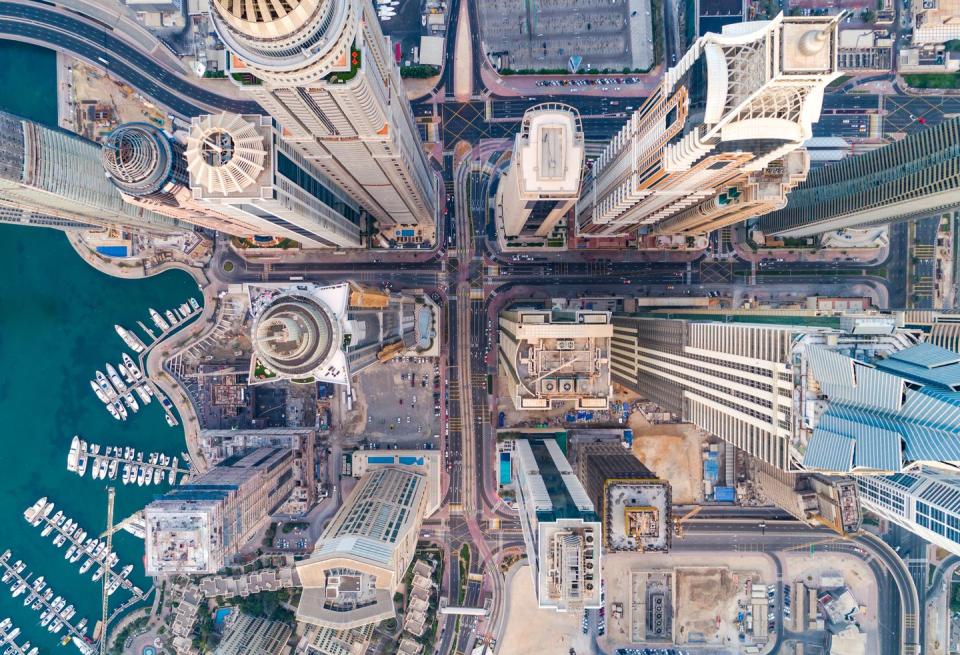
On February 24, 2018, Latifa and Jauhiainen escaped from Dubai by car and rendezvoused by jet ski with Jaubert’s boat off the coast of Oman—but their escape was foiled a week later, when UAE troops and Indian coast guard officers intercepted the vessel and, at gunpoint, took Latifa back to her father in Dubai. (Jaubert and Jauhiainen were held for two weeks then released.)
Latifa wasn’t seen in public for the next nine months. There were reports that she had been jailed inside the Zabeel Palace and kept docile with drugs. Pressured for “proof of life” by the United Nations Commissioner for Human Rights in Geneva, Sheikh Mohammed permitted Mary Robinson, the former president of Ireland and a friend of Princess Haya’s, to spend some time with Latifa in December 2018 at Zabeel Palace, although only in the presence of others.
Latifa sat silent, downcast, somewhat puffy-faced, and expressionless—a shocking change from the animated and intense young woman seen in her pre-escape video—while Robinson, at a press conference following the meeting, repeated the palace’s line: The princess, she pronounced, was “troubled” and “vulnerable” and was receiving medical attention.
Haya herself was vague and evasive when interviewed about the episode on Ireland’s RTE Radio in January 2019. She called Latifa’s escape “a private family mater, and I don’t want to go any more deeply into it, for the protection of Latifa herself and to ensure that she’s not used by anyone else. She’s a vulnerable young woman.”
A CHANGE OF HEART
Much about the saga of Sheikh Mohammed and his princesses remains murky. For starters, there’s the video left behind by Latifa, which supporters call a painfully honest account of her abuse but that some dispute. Latifa calls her father a “torturer,” a “murderer,” and “the worst criminal you can ever imagine in your life,” and describes a nightmarish ordeal, including lying during her captivity on a mattress “covered in blood and shit." Questions have also been raised about Latifa’s 2018 escape itself. In a recent interview, Jaubert’s ex-wife called the whole episode an extortion plot that Jaubert and Latifa concocted to shake down her father for $3 million. Jaubert denies the accusation.
As for Princess Haya’s own escape, the truth behind it is also elusive. The Amman heiress I spoke to suggests that Sheikh Mohammed, perhaps influenced by Crown Prince Hamdan, had tried to restrict some of Haya’s freedoms—it’s unclear which ones—and that she finally had enough of him. “I was told that his eldest sons started influencing him, playing with his mind. I think he became restrictive…and suspicious,” she tells me.
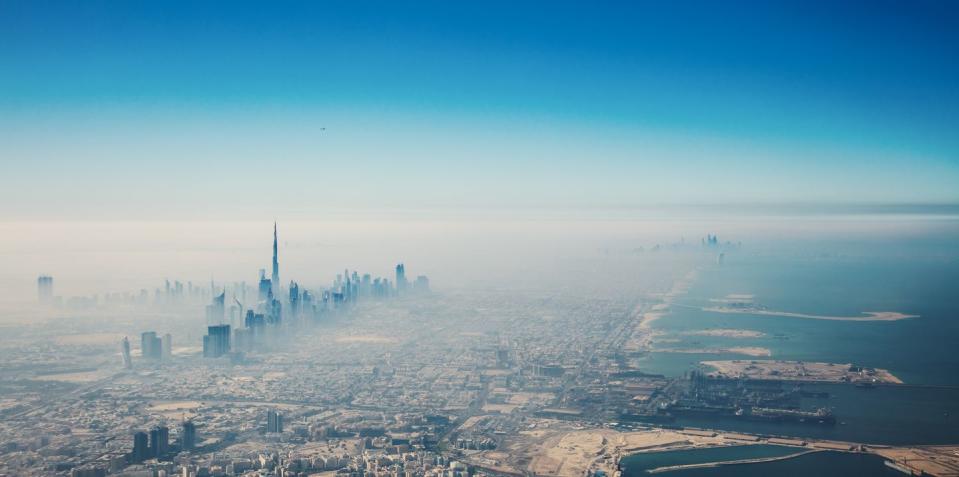
Last July, British newspapers alleged that one factor leading Princess Haya to escape—pushing her over the edge, in effect—was the sheikh’s brutal treatment of Princess Latifa, whom Haya had reportedly never even met before Latifa’s forced return to Dubai in March 2018.
Immediately after Latifa’s escape, Haya “supported her husband or she didn’t think it was any of her business,” says the Jordanian socialite. “In the Arab world you don’t interfere with someone else’s business—and this was his daughter from another marriage.” But in recent months Haya reportedly became troubled by what she had learned about Latifa’s imprisonment—and her reaction prompted intense hostility from the sheikh’s inner circle.
According to Stirling, a big part of Haya and her legal team’s plan to bolster their case for custody of her children is to point out that Mohammed has resisted international inquiries about Latifa and therefore can’t be trusted with his children. As far as the princess’s “closeness” to her bodyguard, most insiders are skeptical. “It doesn’t make sense. She would never risk doing something like that,” Stirling says.
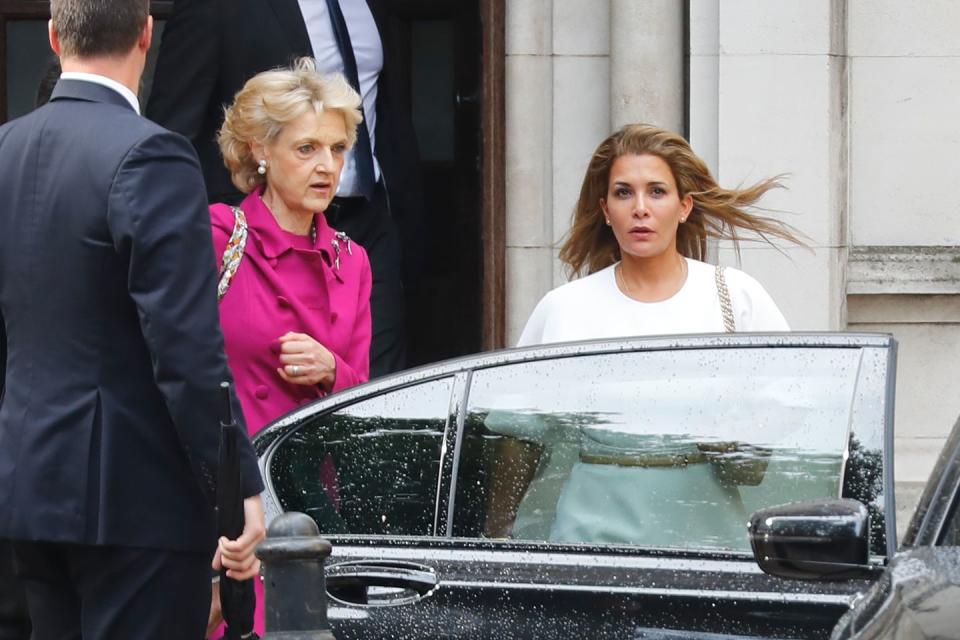
The judge in London has ordered a ban on media coverage, and Shackleton is staying mum. The Jordanian socialite tells me that Haya has played things masterfully up to now, winning public sympathy in the wake of Latifa’s capture, hanging on to her children, and hiring the best legal team in England. Sheikh Mohammed “didn’t expect this,” she says. Haya “is smart, scheming, and manipulative, and she was able to manipulate him. The rest of his wives couldn’t.”
But it’s still unclear who will have the upper hand in the end. Many believe that Sheikh Mohammed would not dare risk the repercussions of trying to forcibly remove from London the daughter of King Hussein and half-sister of King Abdullah. But at last report, Princess Haya remains in seclusion and is said not to be taking anything for granted.
You Might Also Like